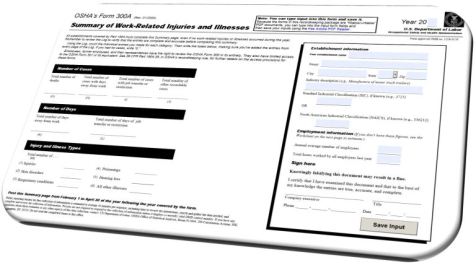Common Mistakes to Avoid With OSHA 300 Logs
With February 1st fast approaching, it is time to turn our attention to our OSHA 300 Logs. While the form itself is only a few pages, the associated OSHA Regulation governing the completion of the logs is over well over 25 pages with multiple letters of interpretation to guide us in this endeavor. Many injuries are straightforward and easily recorded, but we still find mistakes on logs all the time. Mistakes on your logs can hurt even more when they disqualify you from bidding on work, which happens frequently. Many general contractors use DART rates and incident rates to determine who is eligible to bid work, so an accurate log is more important than ever. Here are many of the common mistakes we see and how to avoid them.
- Not updating OSHA 301 and 300 forms within 7 calendar days of a recordable injury. You must be able to produce your log to OSHA upon request from OSHA within 4 hours. Don’t wait until January to complete your forms!
- Not separating business locations and employee groups by establishment. Projects and work locations that last one year or longer can be separated. This is extremely important for companies where one division has a higher incident rate than another because it can prevent one division from bidding work that is vital to their cash flow.
- Not updating 300 Forms when mistakes are discovered or corrections are needed. Again, because you must be able to produce these logs quickly upon request, not making changes as they come up will most certainly result in a delay in record production. Correct these forms as the information becomes available and you will avoid a paperwork nightmare later.
- Recording ALL injuries and illnesses on the 300 Form when not required per OSHA. Not every injury and illness meets the criteria to make it recordable. Did you know that first aid only injuries do not need to be reported on your 300 logs? Make every injury you record meets the recordable criteria.
- Not recording injuries by employees working from home or at business related events when the injury is due to the work. In a world where a large majority of office staff are now working from home, this is more prevalent than ever before. Be sure to record injuries to employees that are working from home as appropriate and for those attending work functions offsite.
- The signature certifying the accuracy of the form is not a “company executive.” OSHA expects a company officer or individual with an ownership stake to certify – not the Branch or Safety Manager! Be certain that the person signing the form has the authority to do so.
If you have questions about how to complete your OSHA 300 logs you can always references the OSHA website here: https://www.osha.gov/recordkeeping/entryfaq.html. And as always, Safety Consultants USA is happy to clarify any questions you may have about how to record employee injuries.



